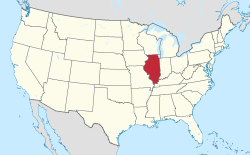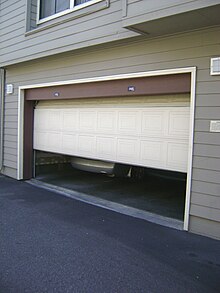What Kind of Garage Door Opener and Door Do You Have? What do you do if the garage door stops functioning? .
It is essential to understand the kind of garage opener and door that you are using before you start troubleshooting.
Garage doors are generally classified into a variety of categories based on their design and operation.The most common kinds are roll-up, sectional and tilt-up doors.Sectional doors are made of panels joined by hinges that allow the door to bend as it is closed and opened on a vertical track.Roll-up doors, which are typically found in commercial environments, are constructed from the slats which roll into a coil.
Tilt-up doors, on contrary are made of a single piece that is able to tilt in and up when it opens.Belt-drive garage door openers have a lower noise, but they use an elastic band instead of chain. They are a great choice for attached garages. Garage door openers with screw-drive employ a rod with a threaded steel to move the garage door. This is the ideal option for noise and cost.
After you have identified your garage door and opener type The next step is to conduct a an initial check for typical issues.Ensure that the power source is connected to the opener examining the plug as well as the breaker.Inspect the release cord for manual to be sure it's not been pulled, which could disconnect the door from the opener.Examine the door's tracks and rollers for any obstructions or damage, and then clear any debris.
If necessary, lubricate the moving parts. A lack of lubrication could cause them to jam or even become stuck.If your door continues to not work, you should consider resetting the opener.This will often fix electronic issues or faults.Consult your opener's manual for specific reset instructions, as this process can vary between models.Many modern openers feature reset buttons, however others may require unplugging and reconnecting.
The tension of springs is very high, and can cause danger to repair them if you don't have the proper tools.
What should you do when the garage door stops functioning? - warranty
- warranty
- customer
- states and union territories of India
When your garage door suddenly stops working then you need to speak with an expert.
Look for any obstructions or other debris
If your garage door suddenly ceases working, it's extremely frustrating and confusing, especially if it's a part of your routine.
One of the most important and most practical steps to undertake when faced with this problem is to look for any obstructions or debris.This simple but effective step can be a key in identifying the issue and restoring functionality to your garage door.Even a small obstruction could hinder your garage door from functioning as it should.
Start by inspecting the tracks both on the right and left sides of the door. Look for obvious obstructions or accumulation. If you notice anything unusual, such as the twig or rock that is stuck within the track. Remove it carefully.
The issue might not always be visible. To determine whether the issue is present, move your fingers down the track. Also, make sure that the tracks are properly aligned. Misalignment can also result in a jammed door.Also, inspect the rollers and hinges. The parts should be able to move without a thump. If they are stuck or sticky, this could be due to rust or grime. Cleaning and lubricating these parts can generally solve the issue.
It's also important to check the area around the door itself.Sometimes things stored inside the garage may accidentally be moved or fall off, blocking the pathway of the door.Ensure that the area is clear and that nothing is obstructing the door's movement.
If, after clearing any apparent obstructions, the door continues to refuse to open take a look at the sensors.
The sensors in modern garage doors could malfunction in the event that they're dirty or if they are not aligned correctly.By ensuring a clear path and avoiding obstructions, you can save yourself the hassle of calling a professional to resolve a problem that's usually simple.
Check the remote control and Wall Switch
It is important to verify the wall switch as well as the remote control.
The inspection of these components can help you to save time and avoid costly mistakes.First, consider the remote control.This handheld device is your primary tool for operating the garage door without direct physical interaction.Over time, remote controls can experience issues such as drained batteries, signal interference, or even internal damage.Start by replacing the batteries with new ones.It might seem simple, but dead batteries are a common reason for a garage door not responding.If the problem persists after replacing the batteries, try reprogramming the remote according to the manufacturer's instructions.Additionally, ensure that the remote is within the recommended range and that there are no obstructions blocking the signal.
Then, pay attention towards the wall switch. It is a important component of the garage door's mechanism.
If you feel at ease then open the switch panel to look for broken or missing wires.The wall switch or the remote control may be working properly, but the door is not yet working. This could be a sign of that there is a problem with the garage opener unit, or with other components for example, sensors or door tracks.
It will allow you to eliminate these common problems before moving on to more intricate troubleshooting techniques.This initial inspection can save you time and provide peace of mind knowing that you've taken the right steps to determine the cause of your issue.
Make sure the door is balanced manually
It can be a hassle and annoying when the garage door ceases working. The garage door is a vital part of your house, as it provides security, protection against elements, as well as ease of access to your car as well as storage.
The most important step to take when faced with a malfunctioning garage door is to examine the door balance.This simple, yet powerful procedure can help diagnose potential issues and stop further damage from occurring to the door or its components.The balance of a garage's door is crucial for its proper functioning.A well-balanced door ensures that the door opener doesn't need to work harder than it has to, reducing the chance of wear and tear on the motor and other parts.An unbalanced door, contrary to what you might think could lead to more severe issues over time like misalignment, broken springs or the complete system failure.Therefore, testing the door balance is a vital method of diagnosis that can help determine if your issue is related to your door or opener mechanism.
To test manually the door's balance, start by disconnecting the garage door opener.
The majority of garage doors come with a release mechanism which is located on the red cord or the handle. After the door is disconnected from the motor lift the door to waist height and release it.What should you do when the garage door stops functioning? - states and union territories of India
- Zumba
- St. Louis
- rust
It is best to contact a professional to help you adjust the springs so that your garage door is correctly balanced. This won't only resolve the issue, but also increase the life and efficiency of your door.
In conclusion, manually testing the door's balance is the first step to take when your garage door stops working suddenly.
When you take action quickly and recognizing the importance of each in addressing the issue, you can make sure that your garage door will run smoothly and safely in the future.Tracks and Rollers
When confronted with a garage door that suddenly refuses to open, your initial instinct is to fear for your life or to think of the most difficult technical issues.However it is often the answer is a simple check of the tracks and rollers.This crucial check will reduce time and costly repairs which is why it's the first thing you should prioritize when your garage door stops working.
The rollers and tracks of the garage's operation system are critical. The tracks are steel rails that guide the door when it opens. The rollers run through the tracks.
These parts can get worn out, dirty or misaligned as time passes. This could cause problems with the operation.Begin by inspecting the tracks for obstructions.Dust and grime even small debris can accumulate on the tracks, leading the rollers to struggle when they move through the path.Cleaning the tracks using a damp sponge can usually solve these issues.Make sure you dry them thoroughly afterward to avoid rust.
After that, you should check the alignment of the tracks.Tracks must be straight and parallel to each other.If they appear bent or out of alignment, your door may jam.You can gently push the sections that are not aligned back into alignment using an rubber mallet.However in the event that the damage is severe then it is recommended to seek out a professional for help to align them in a safe way to ensure security and functionality.
The wear and tear of rollers can occur over time.
What should you do when the garage door stops functioning? - customer
- Latter Day Saint movement
- mining
The use of silicone-based lubricants will reduce wear and friction. Make sure you lubricate the springs and hinges for ensuring that your garage door functions efficiently.
When you make sure that the components are in good alignment and properly lubricated it is possible to get the garage door back to its complete functionality.
Taking the time to periodically check and maintain these parts can also prevent further malfunctions, which can extend the life of your garage door system.Check for visible damage or Wear
It can be very frustrating and annoying when your garage door stops working suddenly, especially if you're on your way home or trying to secure your home for the night.
The garage door is a complicated device made of multiple parts, like springs cables, rollers, and tracks, each of which plays essential roles in its smooth operation.Over time, these parts will wear out because of regular usage and exposure to environmental factors.
By conducting a thorough visual examination, you will be able to identify any obvious signs of damage that may be causing the door to malfunction.Start by inspecting the springs. They are responsible for raising and lowering the door. Check for indications of wear or rust. A worn or broken spring could make the door unusable, so it's crucial to repair this problem immediately. Next, check the cables for signs of fraying or broken cables.
Another aspect to be focused on is the door itself.Look for any visible damages, bends or warpings that could impact the door's balance and alignment.Pay careful attention to the weather stripping on the bottom of the door, since damaged strips can prevent the door from sealing correctly.
Check that the sensors at the door are also cleaned and in good alignment. A misalignment or dirt build-up could cause the sensors to fail and stop functioning.While a visual inspection can provide valuable insights however, it is important to keep in mind that certain issues might not immediately apparent.If you are unable to find any obvious indications of wear or damage, it might be necessary to consult a professional technician to diagnose and resolve the problem.However when you conduct a preliminary examination, you are able to identify and address minor issues before they become important and costly repairs.
If you're confronted with a malfunctioning garage door, looking for visible damage or wear is the first step.This approach is not just helpful to identify the issue fast but also helps you decide the best course of action to restore the door to working properly.
You can extend the life of your garage door simply by being proactive.Check the Springs and Cables
If your garage door stops working is both painful as well as inconvenient.One of the most essential steps you need to take in this scenario is to assess the springs as well as cables.These parts are crucial to the functioning of your garage door, and any issues with them are usually the cause of a broken door.
The springs play a significant function in the operation and ease of your garage by neutralizing the load. There are two major types of springs: extensions and torsion. Torsion springs are placed above the garage and then twist to conserve energy. Extension springs on the other hand, are placed between the doors and are stretched to create the force needed.
These springs can become worn-out over time break, or lose tension, which can cause operational problems.In the same way, cables are crucial because they work with springs that lift and lower the door.They are generally made of steel and designed to withstand significant tension.However cables can suffer from wear and tear, break, or snap because of the enormous pressure they're under.A damaged cable could result in the door becoming unbalanced, or completely inoperative.
If you are unsure whether the springs or cables need to be adjusted or not, visually look them over. Find signs of wear or rust.
Security is a must when working with garage door components.
The cables and springs are in pressure and could result in serious injury if mishandled.If you're unfamiliar with garage repair, it's best to contact an experienced technician.They have the right equipment and know-how to effectively replace or repair these parts to ensure your garage door is operating correctly and securely.In conclusion, when your garage door suddenly stops working, assessing the springs and cables is a key step in diagnosing the problem.Understanding their role and potential issues can help you determine whether a simple adjustment is needed or if professional intervention is required.Taking prompt action not only restores functionality but also ensures the safety and longevity of your garage door system.
You might want to consider calling a professional technician
The garage door could suddenly stop working and cause you to be delayed. It could make your home vulnerable.
It may be tempting to pull out tools to attempt a fix at home however, it is recommended to contact an expert. This option is not just about your safety, but will also provide a lasting and more effective solution.Garage doors are complex systems composed of various components such as springs, cables, tracks, and electronic parts.Each of these elements plays a crucial role in the door's operation, and a malfunction in any part can cause the entire system to fail.Without proper knowledge and experience, attempting to fix these issues can be dangerous.For instance, garage door springs are under high tension and can cause severe injury if handled improperly.Professional technicians are trained to deal with these risks safely, using the right tools and techniques to handle repairs.
In addition, a technician who is a professional brings expertise and experience that an average person does not possess.
They can quickly diagnose the issue and identify whether it's a minor problem, like a misaligned track, or something more serious, like a broken spring.This expertise not only saves you time but also prevents the potential for further damage that can occur with incorrect handling.Professionals also have access to high-quality parts and can ensure that replacements match the specifications of your existing garage door system, leading to better functionality and longevity.A skilled technician will also save money in the long haul. Although DIY methods DIY option may appear cheaper at first, it can result in expensive and costly repairs later.
A lot of technicians offer warranties on their work, giving you peace of mind knowing that in case something goes wrong, you're covered.A professional's help will reduce time and cost. If you are trying to learn the mechanisms behind garage doors, acquire the appropriate tools and complete repairs can take some time or even days. A technician will be able to fix the issue quickly and allow you to return to your regular routine.
In the end, even though the urge to fix your garage door yourself may be strong, calling a professional technician is the safest, most efficient, and in the end, the best option.Their skills, experience in locating quality parts, as well as their ability to carry out quick and precise repairs will ensure that your garage door is repaired and running again safeguarding your property and your valuables.


















